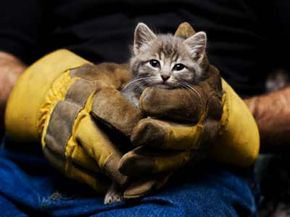The 22 boxer puppies' eyes were a startling red. They were born in a puppy mill and had developed a condition called "cherry eye," or prolapsed inner eyelids. The dogs needed surgery. They also needed a bath -- many of them were stained with feces and infested with mites. They desperately needed food. Most of all, they needed human attention. Fortunately, they wound up at Northwest Boxer Rescue, an organization that gives boxers medical treatment and places them with foster and permanent homes [source: NBR].
Horrifying cases of cruelty and dog fighting make the news, but neglect is actually the most common form of abuse [source: Pet Abuse]. It can range from the extreme -- pets kept chained and malnourished in filthy, squalid shacks -- to the milder and more insidious forms that stem from simple ignorance of an animal's needs.
Advertisement
Some people don't understand the exercise and nutrition requirements of dogs, which are among the most abused animals in the United States. Other people purchase pets without understanding the true costs of pet ownership. Still others obtain exotic or fad pets for which they can't provide an appropriate environment. Sooner or later, all these animals must be rescued. If they're lucky, the owner recognizes the problem, admits his or her failings and brings the animal to a shelter. In other cases, the animal is dependent on the vigilance of neighbors, authorities -- and rescue organizations.
"Rescue," of course, can be defined broadly. So, too, can the range of situations from which people believe animals should be rescued. Some organizations rescue pets and farm animals only from clear cases of cruelty. Other organizations target laboratories, circuses and slaughterhouses. Many rescue groups seek to raise awareness of these issues, but extremist groups sometimes resort to violence or breaking and entering to "liberate" animals.
In this article, we'll take a look at animal rescue groups: how they operate, how they find funding and how you can get involved.
Advertisement


